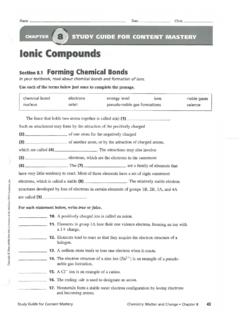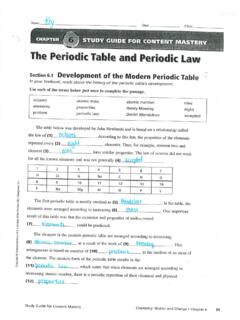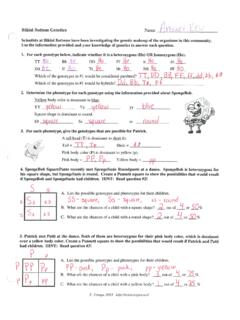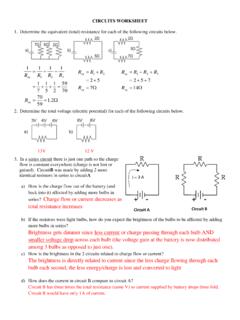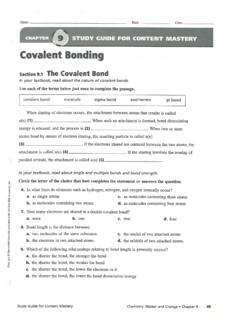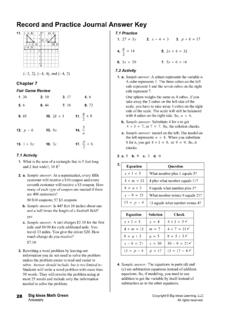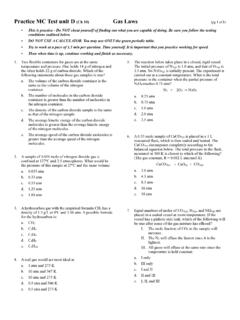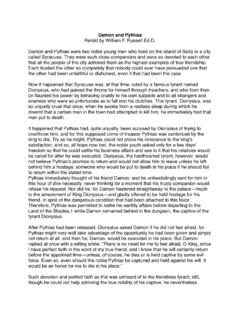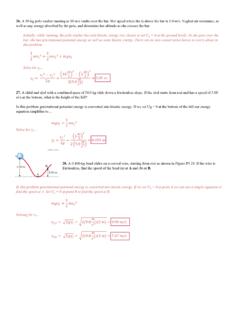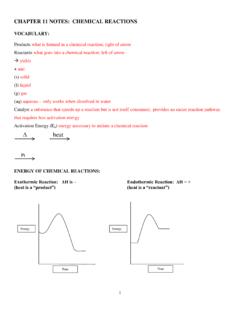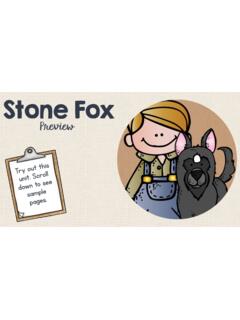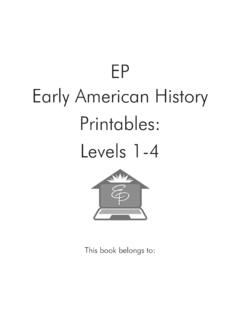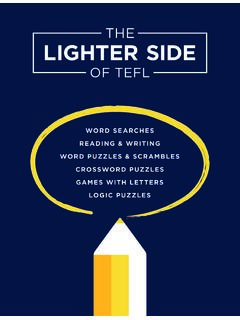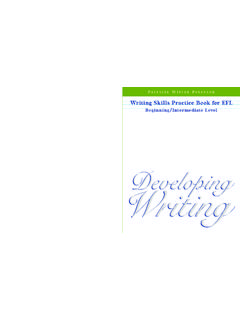Transcription of Teacher’s Guide - Livingston Public Schools
1 Judicial Branch in a Flash Learning Objectives. Students will be able to: Identify the basic levels and functions of the judicial branch Compare the three levels of the court system. Demonstrate the progress of a case as it moves through the judicial system. This lesson plan is part of the Judicial Branch series by iCivics, Inc. a nonprofit organization dedicated to advancing civic education. For more resources, please visit , where you can access the state standards aligned to this lesson plan. Provide feedback to 2011 iCivics, Inc. You may copy, distribute, or transmit this work for noncommercial purposes if you credit iCivics. All other rights reserved. Time Needed: One class period Materials Needed: Student worksheets Copy Instructions: Student packet (four pages double-sided; class set) Judicial Branch Bingo (class set) STEP BY STEP Teacher s Guide ANTICIPATE with a quick poll of the class, asking how many students have heard the following words: trial, judge, jury, Court of Appeals, Supreme Court, remand or judicial review.
2 EXPLAIN that today will be an overview of the judicial system, and that they will learn all these terms and more. DISTRIBUTE one Judicial Branch in a Flash! reading page to each student READ the Judicial Branch in a Flash! reading page together with the class, pausing to explain as necessary. CHECK for understanding by using the true/false activity found on the teacher s Active Participation Review Guide . DISTRIBUTE the Judicial Branch in a Flash! review worksheet. It should have the three sections on one side and the crossword puzzle on the other side. Circulate to answer questions as necessary. Students should use the reading page as a reference sheet. ASSIGN the Judicial Branch in a Flash! review worksheet and the crossword puzzle on the back.
3 CLOSE by quizzing the class with the A/B activity found on the teacher s Active Participation Review Guide . Read the incomplete statement, then give the class the two answer choices. The class may answer by calling A or B as a chorus, or by saying the correct answer as a chorus. ** Optional Extra Activity ** PLAY the Judicial Branch Bingo game with the class. See the Judicial Branch Bingo directions for how to play the game. Judicial Branch in a Flash ** TEACHER Guide ** Active Participation Guide 1. The Supreme Court is a trial court. (F) 2. There is only one judge in a trial court. (T) 3. The Supreme Court can strike down an unconstitutional law. (T) 4. When you first begin a trial, you will be in an appellate court.
4 (F) 5. A jury decides the case in a bench trial. (F) 6. The Supreme Court must take every case that gets appealed to it. (F) 7. If you break a state law, your case will probably be in a state court system. (T) 8. The Supreme Court s power to decide if something is constitutional is called judicial review. (T) 9. It would be easy to prove a case without evidence. (F) 10. If the Court of Appeals remands a case, that means the court says the verdict was right. (F) 11. The federal court system was created by Congress. (T) 12. State court systems were created by the Constitution of the United States. (F) 13. When you ask a higher court to review your case, you are making an appeal. (T) 14. When the Court of Appeals affirms a case, it sends the case back to the trial court.
5 (F) 15. The Supreme Court gets the last word about what the Constitution really says. (T) A or B? Students answer by saying A or B as a chorus or by saying the correct answer as a chorus. Question A B When someone is accused of a crime, the type of case is civil criminal If you appeal a case, you are going to appellate court trial court The court that gets to decide what is constitutional Supreme Court Court of Appeals If the appellate court thinks a decision was wrong, it will affirm the decision reverse the decision If a group of people gives the verdict after a trial, that trial was a jury trial bench trial A word that means relating to the rights of citizens criminal civil The Supreme Court has three justices nine justices If an appellate court sends a case back to the trial court, it has affirmed the case remanded the case If you go to the Court of Appeals.
6 You will see three judges one judge The decision in a case is called the evidence verdict If you break a law of the United States, your case will probably be in federal court state court At trial, lawyers try to prove their case using an appeal evidence State courts were created by the US Constitution state constitutions Active Participation Review Directions: Read each statement aloud to the class. Have the class answer in unison. Watch or listen for a mix of answers, indicating confusion. Quickly discuss before moving on. True/False: Students answer true or false as a chorus or show you thumbs-up / thumbs-down. Judicial Branch in a Flash Name: Reading It s All About the Robes Actually, it s not. The cool black robe judges wear is the first thing a lot of people think of when they hear the word judicial.
7 But the first thing you really need to know is how courts were created. The only court the United States Constitution actually creates is the Supreme Court the highest court in the country. The Constitution also allows Congress to create other courts. When Congress created those courts, the federal court system was born. Criminal v. Civil Most trials you see on TV involve a person who has been accused of a crime. But criminal cases are not the only kind of cases that go to trial. Sometimes people have a disagreement that they can t resolve on their own. Often, one side feels that the other side violated their rights in some way. This kind of case is called a civil case. The goal of a civil case is not to find out whether someone is innocent or guilty, but to decide which side s version of the story is correct.
8 Two Court Systems Here s the confusing part: There are two systems of courts in the United States. The federal court system deals with disputes about laws that apply to the entire United States. State court systems mostly deal with disputes about state laws. Each state has its own court system created by its own state constitution. Whether people take their case to a federal or state court depends on the laws involved in the case. The good news is that state court systems usually work just like the federal court system. You re On Trial! The trial court is the first court to hear a case. Both the state and federal systems have trial courts. In the Federal system, the trial court is called a District Court. In the trial court, lawyers use evidence to try to prove that their client s side of the story is what really happened.
9 Evidence can be almost anything witnesses, videos, photographs, a letter, a piece of fabric, or even a murder weapon! In a jury trial, a group of twelve people listens to the evidence and decides who wins the case. That decision is called the verdict. In a bench trial there is no jury, so the judge gives the verdict. The federal system is divided into districts called circuits. Which Court to Use Each court system deals with certain kinds of cases. Federal courts hear cases involving federal laws, the Constitution, or disputes between citizens of different states. State courts hear cases involving state laws or the state s constitution. They also deal with disagreements between citizens of the state. State courts normally resolve the kinds of issues you hear about in everyday life, such as family matters, accidents, crimes, and traffic violations.
10 Most legal issues that people have get resolved in the state court system. Which roles do you recognize? Judicial Branch in a Flash Name: Reading And That s Final! At the Supreme Court, a panel of nine justices hears the cases. (State supreme courts often have fewer justices.) The Supreme Court gets to choose which cases to take and it doesn t take very many! Often, cases that make it to the Supreme Court are disputes about whether a law goes against the Constitution. Once the Supreme Court has said something is unconstitutional, that s it! Only the Court itself can reverse that decision. This power of deciding what is constitutional is called judicial review. The Supreme Court has this power over federal laws. State supreme courts have this power over state laws.
